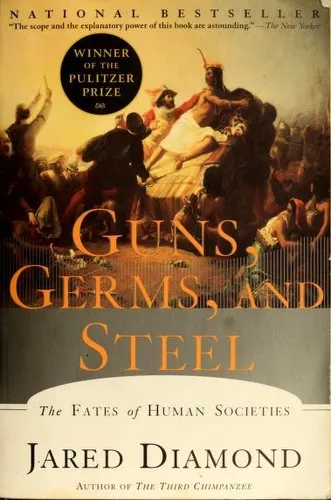1
mention
mention

In the ~mid 16th century the Spanish conquistador Pizarro captured the Incan Emperor Atahualpa despite being outnumbered a few hundred to few tens of thousands. Why didn’t Atauhalpa’s warriors instead land in Spain and capture King Charles I? More generally, why did Europeans conquer the world? And what factors govern the broad trends of societies in the history of our species? Are they predominantly biological? cultural? geographical? is it all luck and chaos? Guns, Germs, and Steel seeks to answer these questions. The central thesis is that if you carefully trace the major factors they will lead you to geography. Do you play Civilization? Of course you do. The book argues that the winner of the game of Civilization has very little to do with the players and almost everything to do with the distribution of resources near the starting locations of different civs. And if there are any biological factors (e.g. civ-specific bonuses), they are negligible in the scheme of things (as it is in Civ games as well). The Europeans, for example, happened to spawn next to a lot of bonus tiles for a wide variety of nutritious plants giving +10 food, and also bonus tiles for several domesticable animals, giving +5 food and +5 production. Any civ player can tell you that if your population grows faster and the cities become bigger and denser you will get lots of nice bonuses: specialist civilians, social stratification, faster research, more culture, etc. Over several hundred years these bonuses add up and the next thing you know you're showing up with 10 +28 attack Musketeers in a territory full of gold tiles defended by a +8 attack Aztec warrior. Unmodeled by Civilization games, you also enjoy carrying more germs that you’re also resistant to, and it's cheaper to establish trade routes west-east instead of south-north due to climates (convenient for Eurasia, not so much for America). These are very important questions and it’s all great to know and contemplate, but dammit is it painful - the book feels like eating your vegetables. Be prepared to hear (in excruciating detail) about different protein:carb:fat ratios of dozens of plants species you’ve never heard of. Be prepared to learn much more than you ever wanted about all possible candidate animals for domestication. Jared in fact manages to enumerate them all. These sections are definitely interesting and you can’t help but admire the thoroughness and attention to detail here, but it’s exhausting. There are a few more things that can be critiqued: - the hypocrisy in the dubious claim that Papa New Guineans are smarter than whites is jarring, considering that the whole point of the book is to discredit biological determinism. - the book is almost certainly sometimes guilty of post-hoc reasoning, but admittedly Jared is aware of this criticism and tries hard to avoid it. - the pacing is slightly off: there are hundreds of pages devoted to plant seeds, and only dozens of pages devoted to much more interesting patterns of development (especially in the last chapter). I can’t decide if I should recommend this book. I personally liked it (i.e. 3/5 on Goodreads scale). It was a significant undertaking and I feel that I’ve gained quite a bit of insight into the development of societies in the history of our species, but… at what cost? **shudders**. 3/5
— Andrej Karpathy
2016-05-19 on goodreads.com